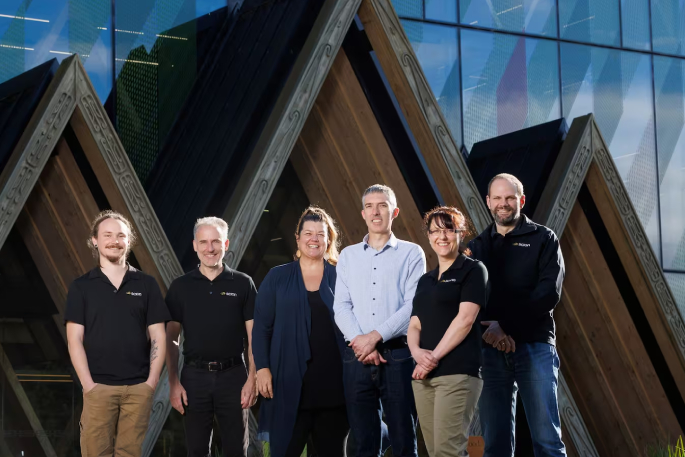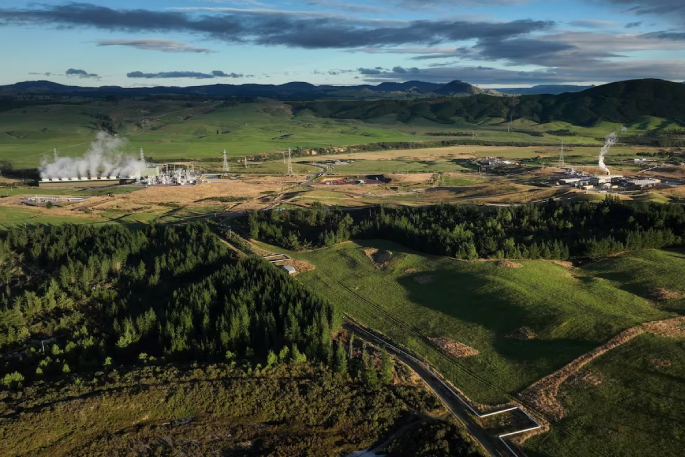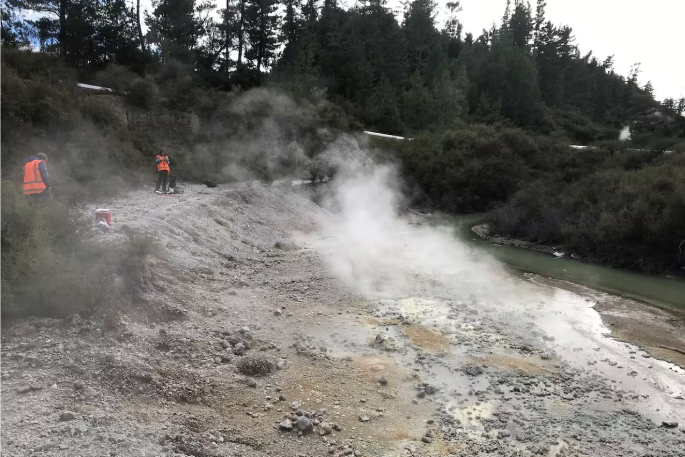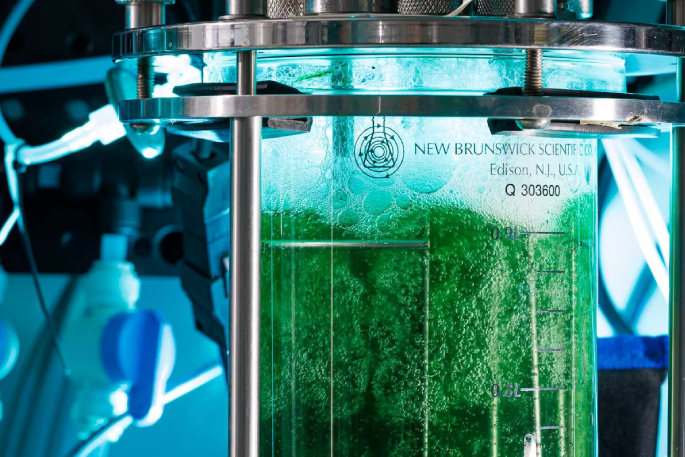A group of scientists is working on a way to create protein from a particular algae and bacterium found in geothermal gases, potentially creating an industry that could be worth $500 million to the Central North Island economy.
The project has received $5m funding from the Ministry for Primary Industries and Tauhara No 2 Trust to progress research into creating livestock feed from microorganisms that feed off greenhouse gas emissions captured at geothermal power stations.
Research has already shown that two microorganisms - a bacterium and an algae – can be used together to convert carbon dioxide and methane into a protein-rich biomass.
The four-year research project will be the first in the world to create feedstock production from the gases and robust microorganisms that thrive in the extreme conditions found at geothermal sites.
Tauhara North No 2 Trust has significant investments in geothermal power assets at the Rotokawa geothermal reservoir.
Trust group chief executive Mana Newton said they were seeking more than financial outcomes.
 Members of the team outside Scion’s campus in Rotorua (from left): Scion laboratory process technician Tasman van der Woude, Scion microbial biotech team lead Christophe Collet, Upflow director of business and innovation Andy Blair, Upflow chief engineer Andrew Marsh, Scion bioprocess engineer Carla Cronje, and Scion portfolio leader for distributed manufacturing Marc Gaugler. Photo / Scion.
Members of the team outside Scion’s campus in Rotorua (from left): Scion laboratory process technician Tasman van der Woude, Scion microbial biotech team lead Christophe Collet, Upflow director of business and innovation Andy Blair, Upflow chief engineer Andrew Marsh, Scion bioprocess engineer Carla Cronje, and Scion portfolio leader for distributed manufacturing Marc Gaugler. Photo / Scion.
“Having geothermal assets in our rohe (region) gives us the opportunity to unlock potential new industries and leverage our existing knowledge to create new jobs and revenue for mana whenua and regional communities.”
Geothermal consultancy Upflow, based in Rotorua, is the delivery partner for the project, and would work with researchers from Crown Research Institute Scion, the University of Canterbury and algae experts from Cawthron Institute and early research looked promising.
Industrial biotechnology processes use a methane-eating bacterium, and a carbon dioxide-eating microalgae to capture the gases and use them as a food source for growth.
This process could generate a biomass rich in protein which was being explored as an animal feed ingredient, for human nutrition, or to produce high-value nutraceuticals or pigments.
The initial focus was on the protein component for the primary sector, while also investigating the potential for premium products.
MPI’s investment of $2.49m in the project comes from the Sustainable Food and Fibre Futures Fund and director of investment programmes Steve Penno said it was an exciting project.
 Members of the team in the lab at Scion (pictured clockwise from left): Scion microbial biotech team lead Christophe Collet, Upflow director of business and innovation Andy Blair, Upflow chief engineer Andrew Marsh, Scion portfolio leader for distributed manufacturing Marc Gaugler, Scion laboratory process technician Tasman van der Woude, and Scion bioprocess engineer Carla Cronje. Photo / Scion.
Members of the team in the lab at Scion (pictured clockwise from left): Scion microbial biotech team lead Christophe Collet, Upflow director of business and innovation Andy Blair, Upflow chief engineer Andrew Marsh, Scion portfolio leader for distributed manufacturing Marc Gaugler, Scion laboratory process technician Tasman van der Woude, and Scion bioprocess engineer Carla Cronje. Photo / Scion.
“If successful, this could be the start of a new biomass feedstock manufacturing industry for New Zealand, worth an estimated $500 million per annum by 2045, creating new skilled jobs.
“It would reduce our reliance on imported livestock feed, and decarbonise these industries, while also reducing the cost of carbon emissions for geothermal companies that adopt the system.”
New Zealand Trade and Enterprise estimates that New Zealand feeds an estimated 40 million people worldwide.
Upflow director of business and innovation Andy Blair said they wanted to “futureproof this legacy” by providing a food production option using the country’s abundant geothermal resources.
“We’re making animal feed from greenhouse gases.”
Only small quantities of the biomass have been cultivated and tested so far from pure gases.
 Default Geothermal power stations Nga Awa Purua (left) and Rotokawa (right) are in the Tauhara North No 2 Trust rohe. Photo / Roy Taoho, Tauhara North No 2 Trust.
Default Geothermal power stations Nga Awa Purua (left) and Rotokawa (right) are in the Tauhara North No 2 Trust rohe. Photo / Roy Taoho, Tauhara North No 2 Trust.
In the next step, scientists would build a pilot-scale facility.
More work also needed to be done to determine markets for the biomass, including agriculture, aquaculture, and the potential for human nutrition.
Inghams Enterprises NZ is a partner in the project, bringing its own insights into animal feed.
Scion’s portfolio leader for distributed and circular manufacturing Marc Gaugler said they were looking forward to seeing the technology contribute to regional economic development, create new value from waste and benefit the geothermal sector by helping it decarbonise.
Blair said the project is an example of “visionary” individuals and organisations taking a risk and coming together to incubate an emerging New Zealand-led scientific discovery.
“Many great research ideas struggle to find real-world application, and to bridge the gap between laboratory-scale concept and application at scale. We’re giving this technology the time and support it needs to be shaped for commercial reality.”
 Sampling at Parariki in the Rotokawa geothermal area for extremophilic microorganisms. The high-temperature microalgae and bacteria used in this project were sourced from geothermal soils in the Tauhara North No 2 Trust rohe. Photo / Matthew Stott, University of Canterbury.
Sampling at Parariki in the Rotokawa geothermal area for extremophilic microorganisms. The high-temperature microalgae and bacteria used in this project were sourced from geothermal soils in the Tauhara North No 2 Trust rohe. Photo / Matthew Stott, University of Canterbury.
The Energy Efficiency and Conservation Authority advises that geothermal power production produce significantly fewer greenhouse gases than fossil-fuel stations but some carbon dioxide and methane is transported to the surface when the fluid is extracted.
“While amounts vary from field to field and the amount that is released depends on the design of the power station, generally levels are still significantly less than natural gas-fuelled or coal fired power stations,” EECA says on its website.



0 comments
Leave a Comment
You must be logged in to make a comment.